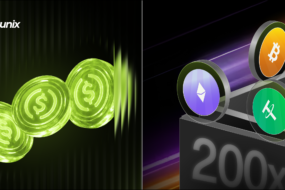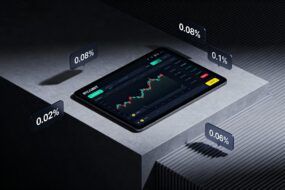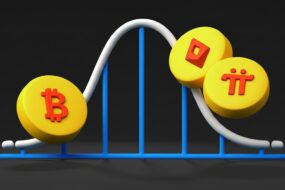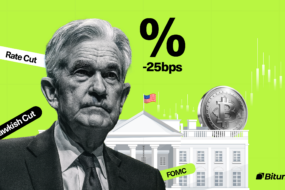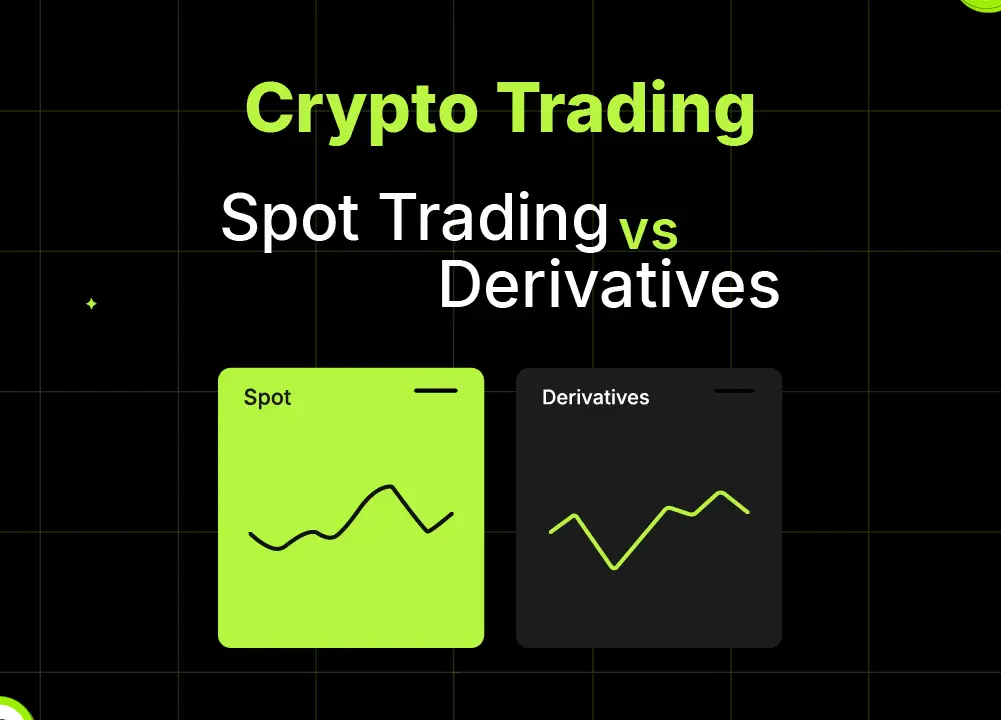
Newcomers typically find them in no man’s land when they enter the fast-paced world of crypto trading. It’s mostly a hard nut to crack for most of the rookie investors. It takes them time and research, sometimes losses too before they get the hang of things in the crypto world. Among the various types of trading, spot and derivatives trading stand out as fundamental strategies, each offering unique opportunities and risks.
Whether you’re just dipping your toes into the crypto pool or you’re looking to diversify your trading strategies, getting a solid grasp of both spot and derivative trading is crucial.
This article will explore these two popular forms of crypto trading, breaking down their differences, advantages, disadvantages, and how they fit into the broader market dynamics.

What is Spot Trading?
Spot trading is a straightforward method of trading cryptocurrencies where you buy or sell digital currencies like Bitcoin, Ethereum, or any other altcoin directly on a trading platform. When you engage in spot trading, the transactions are completed right away at the current prices that are being offered in the market.
Buying and Selling
You decide whether you want to buy or sell a cryptocurrency. If you’re buying, you pay the current market price using traditional currency or another crypto. If you’re selling, you receive money or another crypto in exchange for the cryptocurrency you sell.
Immediate Ownership
Once you buy a cryptocurrency through spot trading, you immediately become the owner of those digital coins. There’s no delay; the coins are transferred directly to your digital wallet right after the transaction.
Control over Your Coins
After purchasing, you have full control over what to do with your cryptocurrencies. You can choose to hold onto them in your wallet, use them to make purchases, or even send them to someone else.
Advantages of Spot Trading
Spot trading, a common method of trading cryptocurrencies, offers several advantages that make it appealing, especially to those new to the world of crypto trading. Here’s a breakdown of these advantages in simple terms:
Simplicity
Spot trading is about as straightforward as it gets in the financial markets. You simply buy a cryptocurrency at one price and aim to sell it at a higher price to make a profit. The process is direct: choose a cryptocurrency, buy it at the current market price, and then sell it when the price goes up. The difference between your buying price and selling price is your profit. There’s no need to deal with complex financial instruments or strategies.
Transparency
One of the key benefits of spot trading is transparency. The prices at which you buy and sell are clear and available in real-time. This transparency ensures that you are always aware of the current market value of the cryptocurrencies you are trading, which reflects the immediate supply and demand. There are no hidden fees or prices; what you see is what you get, allowing you to make informed decisions based on current market conditions.
Ownership
When you buy cryptocurrencies through spot trading, you gain actual ownership of the coins. Once you purchase the crypto, it belongs to you completely, not just on paper or as a promise. This ownership allows you to transfer the cryptocurrency out of the trading platform and into your private wallet, providing you with full control over it. You can choose to hold it as a long-term investment, use it for transactions, or transfer it to other parties. This direct ownership is a significant advantage because it gives you complete autonomy over your investments without being tied to the constraints or security risks of an exchange platform.

Disadvantages of Spot Trading
While spot trading in cryptocurrencies offers several benefits, it also comes with certain disadvantages that traders should be aware of:
Market Limitation
One of the primary drawbacks of spot trading is that your ability to make a profit depends almost entirely on the asset’s price increasing. In spot trading, you buy an asset at a certain price and hope to sell it later at a higher price to make a profit. However, if the market’s overall trend is downward, the value of the asset may decrease after you purchase it. If prices continue to fall, you could end up selling for less than you paid, resulting in a loss. This market limitation means that making a profit through spot trading can be challenging during bear markets, where prices are generally declining.
Liquidity Issues
Liquidity refers to how quickly and easily an asset can be bought or sold in the market without affecting its price. In the context of spot trading, liquidity is crucial because it impacts the speed at which you can complete transactions and the accuracy of the prices at which you buy or sell.
If you choose to trade a less popular or newer cryptocurrency, you might encounter liquidity issues. This means there aren’t enough buyers or sellers at any given time to fulfill your trade immediately without significant price changes. For example, if you’re trying to sell a cryptocurrency but there aren’t enough interested buyers, you may have to lower your selling price to make it more attractive, which can reduce your profits. Conversely, if you’re buying and there’s low liquidity, you might have to pay a higher price if sellers are few.
These liquidity issues can lead to delays in executing trades and result in less favorable prices, both of which can negatively impact your trading strategy and potential profits. Understanding these disadvantages is crucial for anyone involved in spot trading, as they highlight the risks and challenges that can affect the profitability and efficiency of your trading activities.
What is Derivatives Trading?
Derivatives trading in the context of cryptocurrencies refers to financial instruments that derive their value from the underlying assets’ prices. These instruments include futures, options, contracts for differences (CFDs), and perpetual swaps.
Unlike spot trading, you don’t own the actual cryptocurrency. Instead, you’re entering into a contract to exchange the asset at a predetermined future price or profiting from the price movements without actually holding the asset.

Choosing Between Spot and Derivatives Trading
Choosing between spot trading and derivatives trading in the cryptocurrency market largely hinges on your personal investment goals, how much risk you’re willing to take, and your level of experience with trading. Each type of trading offers different benefits and involves different strategies.
Spot Trading
Spot trading is the most straightforward form of trading. It involves buying and selling cryptocurrencies such as Bitcoin, Ethereum, or other altcoins at their current market prices. You actually own the cryptocurrency, which means you can transfer it to your wallet, hold it, or use it as you see fit.
Who should choose spot trading?
Beginners: If you’re new to cryptocurrency trading, spot trading is a great starting point because of its simplicity. You don’t need to understand complex financial instruments or strategies to get started.
Long-term Investors: If you believe that the value of a cryptocurrency will appreciate over time, spot trading allows you to buy and hold the asset. It’s ideal for those who want to invest in the long-term potential of a crypto asset rather than looking to make a quick profit.

Derivatives Trading
Unlike spot trading, derivatives trading does not involve directly buying or selling a cryptocurrency. Instead, you trade contracts or financial instruments that derive their value from the performance of an underlying asset, such as a cryptocurrency. This can include futures, options, or swaps. Derivatives trading allows you to speculate on the price movement of cryptocurrencies without actually owning them.
Who should choose derivatives trading?
Experienced Traders: Derivatives trading is more complex and requires a good understanding of the market and trading strategies. If you have experience trading and can manage more sophisticated trades, derivatives might be suitable for you.
Risk-Takers: This type of trading often involves using leverage, which means you can control a large contract with a relatively small amount of capital. While this can lead to high returns, it also increases the risk significantly. If you’re comfortable taking higher risks for the possibility of higher rewards, derivatives trading can offer this opportunity.
Short-term Traders: If you’re interested in taking advantage of market volatility to make quick profits, derivatives allow you to speculate on both rising and falling market prices without the need for a large capital investment. This can be particularly appealing in the fast-moving crypto markets.
Key Takeaways
Both spot and derivatives trading have their place in the world of cryptocurrency. By understanding the characteristics and uses of each, traders can better equip themselves to make informed decisions and develop strategies that align with their financial goals and risk appetite. Whether you choose to purchase and hold actual cryptocurrencies or to speculate on their prices through derivatives, the key to success lies in thorough research, continuous learning, and disciplined risk management. So, dive into the dynamic crypto market with a clear understanding of what each trading type entails and find the path that best suits your trading style and objectives.
FAQs
What is spot trading in cryptocurrencies?
Spot trading involves directly buying or selling cryptocurrencies like Bitcoin, Ethereum, or other altcoins at their current market prices on a trading platform. The transactions are executed immediately, meaning you own the actual cryptocurrency right after the transaction, and you can transfer, hold, or use it as you wish.
What are the main advantages of spot trading?
Spot trading is appreciated for its simplicity, transparency, and the immediate ownership it offers. It’s straightforward because you simply buy low and sell high to make a profit. The process is transparent with real-time price availability, and once you purchase a cryptocurrency, you gain full control over your digital coins.
What are the disadvantages of spot trading?
The primary disadvantages include market limitation, where your profits depend solely on price increases, and liquidity issues, which can affect how quickly you can buy or sell your assets without impacting the price.
What is derivatives trading in the context of cryptocurrencies?
Derivatives trading doesn’t involve buying the cryptocurrency itself but involves trading financial instruments like futures, options, and swaps that derive their value from the prices of underlying cryptocurrencies. This type of trading allows you to speculate on price movements without owning the actual crypto.
Who should consider derivatives trading?
Derivatives trading is suitable for more experienced traders who understand complex trading strategies and are comfortable with high-risk, high-reward setups. It’s also ideal for those looking to leverage small amounts of capital to gain significant exposure.
How do you decide whether to engage in spot or derivatives trading?
Your decision should depend on your trading experience, risk tolerance, and investment goals. Spot trading is recommended for beginners and those interested in long-term holdings of actual cryptocurrencies. In contrast, derivatives are better for experienced traders interested in taking advantage of market volatility and price speculation.
What are the key takeaways when choosing between spot and derivatives trading?
Both trading types have distinct characteristics and cater to different trader profiles. Spot trading offers simplicity and direct ownership, making it ideal for long-term investors and beginners. Derivatives trading, on the other hand, offers high potential returns and the ability to profit from market movements without direct ownership, suitable for experienced traders and those seeking short-term opportunities. Successful trading in either form requires an understanding of market dynamics, disciplined risk management, and continuous learning.





